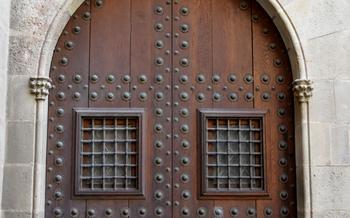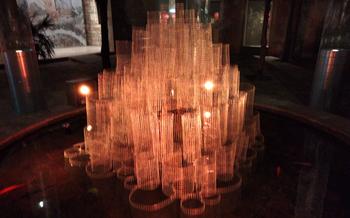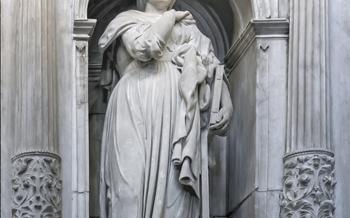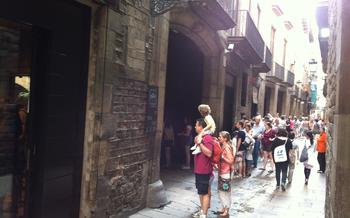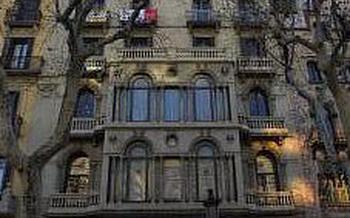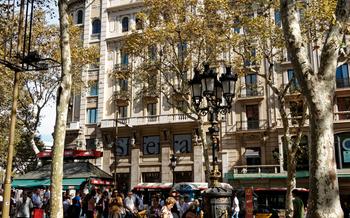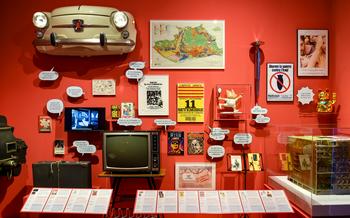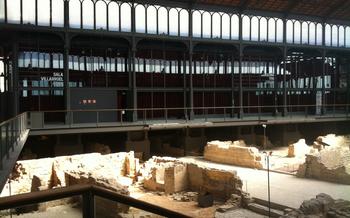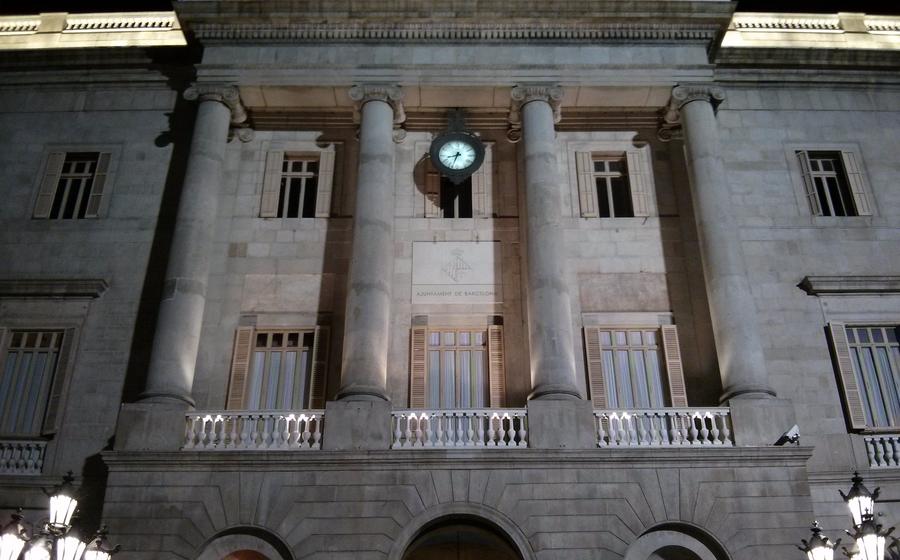
Casa de la Ciutat
- Historical Significance
- Guided Tours
- Chapel of Sant Miquel
- Courtyards: Hidden Oases of Beauty
- Exhibitions and Events
- Accessibility
- Photography and Videography
- Nearby Attractions:
- Dress Code
- Visitor Information:
- Insider Tip:
Historical Significance
The Casa de la Ciutat, also known as the Barcelona City Hall, has a rich history that dates back to the 14th century. It was initially constructed as the seat of the Consell de Cent, the city's governing body, and has served as the headquarters of the Barcelona City Council since its inception. Over the centuries, the Casa de la Ciutat has witnessed significant historical events and played a crucial role in shaping the political and social landscape of Barcelona. Its architectural evolution, blending Gothic, Renaissance, and Baroque elements, reflects the city's changing artistic and cultural influences. The building stands as a testament to Barcelona's rich history and its enduring spirit of self-governance.
Guided Tours
Enhance your visit to the Casa de la Ciutat by booking a guided tour. Led by knowledgeable guides, these tours provide an immersive experience, delving into the rich history and architecture of the building.
Learn about the different rooms and their functions, including the grand Saló de Cent, where important council meetings and royal ceremonies took place. Discover hidden details and fascinating stories that bring the Casa de la Ciutat to life.
Choose from various tour options to suit your preferences. Regular group tours offer a comprehensive overview of the building, while private tours allow for a more personalized experience.
Immerse yourself in the captivating history and architectural splendor of the Casa de la Ciutat through a guided tour. It's an unforgettable journey that will leave you with a deeper appreciation for this iconic landmark.
Chapel of Sant Miquel
Nestled within the walls of the Casa de la rich religious heritage. Its Gothic architecture, dating back to the 14th century, transports visitors to a time of deep faith and devotion. As you step inside, the intricate details of the vaulted ceiling and the elaborate altarpiece captivate the eye. The chapel's serene atmosphere invites contemplation and reflection, allowing you to connect with the spiritual essence of this historic building. Discover the stories and legends associated with the Chapel of Sant Miquel, and experience the tranquility and reverence that permeate this sacred space.
Courtyards: Hidden Oases of Beauty
As you explore the Casa de la Ciutat, don't miss the opportunity to wander through its picturesque courtyards. These tranquil havens offer a respite from the bustling city and a chance to immerse yourself in the architectural beauty of the building.
Step into the Pati dels Tarongers, the Orange Tree Courtyard, and admire the Renaissance-style arches and columns that surround it. The courtyard is named after the orange trees that once adorned its center, adding a touch of natural beauty to the space.
Another courtyard worth visiting is the Pati de la Casa de la Ciutat, also known as the Main Courtyard. This larger courtyard features a blend of Gothic and Baroque elements, including intricate stone carvings and sculptures. The courtyard is often used for official ceremonies and events, but it is also open to visitors during certain times of the day.
As you stroll through the courtyards, take a moment to appreciate the details that make them so special. Notice the beautifully carved stonework, the ornate balconies, and the lush greenery that adds a touch of color and life to these hidden oases.
These courtyards are perfect places to sit, relax, and soak in the atmosphere of the Casa de la Ciutat. Whether you're looking for a quiet spot to reflect or simply want to escape the crowds, the courtyards offer a peaceful retreat within the heart of Barcelona.
Exhibitions and Events
The Casa de la Ciutat is not just a historical and architectural marvel; it is also a vibrant cultural hub that hosts a variety of exhibitions and events throughout the year. These events showcase the diverse cultural and artistic offerings of Barcelona and provide visitors with a unique opportunity to experience the city's creative spirit.
From art exhibitions showcasing local and international artists to lectures on history, architecture, and urban planning, the Casa de la Ciutat offers something for everyone. Music concerts, dance performances, and film screenings further enrich the cultural tapestry of the building.
Attending an exhibition or event at the Casa de la Ciutat is a fantastic way to immerse yourself in Barcelona's cultural scene and gain insights into the city's rich history and heritage. Check the official website or inquire at the information desk for details on upcoming events and exhibitions.
Don't miss the chance to experience the Casa de la Ciutat not only as a historical landmark but also as a vibrant cultural center that celebrates the diverse artistic expressions of Barcelona.
Accessibility
To ensure an enjoyable and inclusive visit for all, the Casa de la Ciutat has implemented various accessibility features. Wheelchair users and visitors with limited mobility can easily navigate the building thanks to ramps and elevators. Additionally, the Casa de la Ciutat staff is available to provide any necessary assistance or accommodations. Visitors with specific needs are encouraged to contact the Casa de la Ciutat in advance to ensure a smooth and comfortable visit. By prioritizing accessibility, the Casa de la Ciutat demonstrates its commitment to welcoming and accommodating all visitors, regardless of their physical abilities.
Photography and Videography
Capture the architectural beauty and historical significance of the Casa de la Ciutat through the lens of your camera. Photography and videography are allowed within the building, but it is important to follow the guidelines to ensure the preservation and respect of this historic landmark.
When taking photographs, be mindful of the privacy of other visitors and refrain from using flash or tripods. For videography, obtain the necessary permits and permissions from the Casa de la Ciutat authorities.
Share your experiences and stunning visuals with the world through social media and online platforms, using relevant hashtags to connect with like-minded travelers and enthusiasts. Document the architectural details, the grandeur of the halls, and the captivating atmosphere of the Casa de la Ciutat, helping to promote and preserve its legacy.
Nearby Attractions:
After exploring the architectural wonders of the Casa de la Ciutat, venture out to discover the captivating nearby attractions that Barcelona has to offer. Just steps away, you'll find yourself in the heart of the Gothic Quarter, a labyrinth of narrow cobblestone streets lined with medieval buildings, boutiques, and hidden plazas.
Stroll through the Plaça de Sant Jaume, the political center of Barcelona, where the Casa de la Ciutat stands alongside the Palau de la Generalitat, the seat of the Catalan government. Marvel at the imposing facade of the Barcelona Cathedral, a masterpiece of Gothic architecture, with its soaring spires and intricate stained-glass windows.
Immerse yourself in the city's rich history at the Museu d'Història de Barcelona, housed in a former royal palace. Trace the evolution of Barcelona from its Roman origins to its modern cosmopolitan status through fascinating exhibits and artifacts.
Discover hidden gems such as the Museu Frederic Marès, showcasing a vast collection of sculptures, paintings, and other artworks, or the Museu Picasso, dedicated to the life and work of the legendary artist Pablo Picasso.
Plan a well-rounded itinerary that allows you to experience the diverse charms of Barcelona, from its architectural wonders to its vibrant cultural scene. Create lasting memories as you explore the treasures that lie just beyond the doorstep of the Casa de la Ciutat.
Dress Code
When visiting the Casa de la Ciutat, it is essential to dress appropriately, respecting the historical and institutional nature of the building. Avoid wearing shorts, tank tops, or revealing clothing. Instead, opt for smart casual attire that is both comfortable and respectful. Maintaining a professional demeanor throughout your visit shows consideration for the significance of the building and its role as the seat of the Barcelona City Council. Remember, dressing appropriately not only enhances your experience but also demonstrates respect for the local culture and customs.
Visitor Information:
Before embarking on your journey to the Casa de la Ciutat, it is crucial to gather essential visitor information to ensure a smooth and enjoyable experience. Begin by exploring the official website of the Barcelona City Council, where you will find up-to-date details regarding opening hours, admission fees, and guided tour schedules. This will allow you to plan your visit accordingly and avoid any disappointment. Additionally, consider visiting the Casa de la Ciutat on a weekday morning, as this tends to be a quieter period with fewer crowds, offering a more intimate and tranquil experience.
Take advantage of the free guided tours offered by the Barcelona City Council on specific days. These tours provide an excellent opportunity to delve deeper into the history, architecture, and significance of the building, gaining valuable insights from knowledgeable guides. By planning ahead and utilizing these resources, you can make the most of your visit to the Casa de la Ciutat, ensuring a memorable and enriching experience.
Insider Tip:
If you want to explore the Casa de la Ciutat at your own pace and avoid the crowds, plan your visit for a weekday morning. This is when the building is typically quieter, allowing you to wander through its halls and courtyards without feeling rushed. Additionally, the Barcelona City Council offers free guided tours on certain days, which provide an excellent opportunity to learn more about the history and architecture of the building. These tours are led by knowledgeable guides who can share hidden gems and lesser-known stories that you might miss if you were exploring on your own. By taking advantage of these insider tips, you can make the most of your visit to the Casa de la Ciutat and gain a deeper understanding of its significance.

